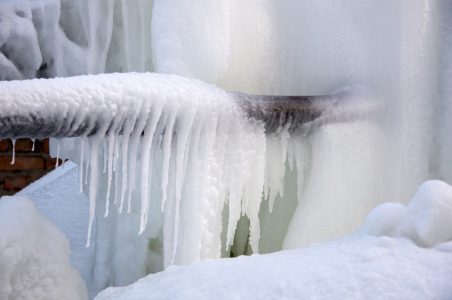Preventing Frozen Pipes in Cold Weather: Pro Tips
Preventing Frozen Pipes in Cold Weather: Pro Tips
Blog Article
Just about everyone has their own unique way of thinking in relation to Winter Plumbing Precautions: Preventing Frozen Pipes.

Winter can wreak havoc on your plumbing, especially by freezing pipelines. Below's just how to prevent it from happening and what to do if it does.
Introduction
As temperatures decrease, the danger of icy pipelines boosts, possibly causing pricey repair services and water damages. Recognizing just how to avoid icy pipes is crucial for house owners in cold climates.
Prevention Tips
Protecting prone pipelines
Cover pipelines in insulation sleeves or use heat tape to safeguard them from freezing temperatures. Focus on pipes in unheated or outside areas of the home.
Heating methods
Keep indoor areas properly heated, particularly locations with pipes. Open cupboard doors to allow warm air to flow around pipes under sinks.
How to recognize frozen pipelines
Search for decreased water circulation from taps, uncommon odors or noises from pipes, and visible frost on subjected pipes.
Long-Term Solutions
Architectural adjustments
Consider rerouting pipelines away from outside wall surfaces or unheated locations. Add additional insulation to attics, cellars, and crawl spaces.
Updating insulation
Purchase premium insulation for pipes, attic rooms, and walls. Proper insulation aids preserve consistent temperature levels and decreases the risk of icy pipes.
Securing Outdoor Pipes
Garden tubes and outdoor taps
Disconnect and drain pipes yard hose pipes prior to winter season. Mount frost-proof spigots or cover outside taps with insulated caps.
Comprehending Icy Pipes
What causes pipelines to ice up?
Pipelines freeze when subjected to temperature levels listed below 32 ° F (0 ° C) for expanded periods. As water inside the pipes freezes, it broadens, putting pressure on the pipe walls and potentially causing them to break.
Threats and damages
Icy pipes can cause water interruptions, residential or commercial property damage, and costly repair services. Burst pipelines can flooding homes and create substantial structural damage.
Indicators of Frozen Pipeline
Recognizing icy pipes early can stop them from bursting.
What to Do If Your Pipes Freeze
Immediate activities to take
If you believe icy pipelines, keep faucets open to relieve stress as the ice thaws. Utilize a hairdryer or towels soaked in warm water to thaw pipelines slowly.
Conclusion
Protecting against icy pipes calls for positive steps and fast actions. By understanding the reasons, indications, and safety nets, house owners can protect their pipes throughout cold weather.
6 Proven Ways to Prevent Frozen Pipes and Protect Your Home
Disconnect and Drain Garden Hoses
Before winter arrives, start by disconnecting your garden hoses and draining any remaining water. Close the shut-off valves that supply outdoor hose bibs and leave the outdoor faucet open to allow any residual water to drain. For extra protection, consider using faucet covers throughout the colder months. It’s also important to drain water from any sprinkler supply lines following the manufacturer’s directions.
Insulate Exposed Pipes
Insulating your pipes is an effective way to prevent freezing. Pipe insulation is readily available at home improvement stores and is relatively inexpensive. Pay close attention to pipes in unheated areas such as the attic, basement, crawl spaces, or garage. Apply foam insulation generously to create a buffer against the cold. You can also wrap your pipes in heat tape or thermostat-controlled heat cables for added warmth.
Seal Air Leaks
Inspect your home for any cracks or openings that could let in cold air. Seal any holes around the piping in interior or exterior walls, as well as the sill plates where your home rests on its foundation. Additionally, make sure to keep your garage door closed unless you’re entering or exiting. Leaving it open creates a significant air leak that can lead to frozen pipes.
Allow Warm Air Circulation
During cold snaps, it’s essential to allow warm air to circulate evenly throughout your home. Leave interior doors ajar to promote better airflow. Open kitchen and bathroom cabinets to help distribute heat consistently around the rooms. If you have small children or pets, be sure to remove any household chemicals or potentially harmful cleaners from open cabinets for safety.
Let Faucets Drip
A small trickle of water can make a big difference in preventing ice formation inside your pipes. When temperatures drop significantly, start a drip of water from all faucets served by exposed pipes. This continuous flow helps prevent the water from freezing. Additionally, running a few faucets slightly can relieve pressure inside the pipes, reducing the chances of a rupture if the water inside does freeze.
https://choateshvac.com/6-proven-ways-to-prevent-frozen-pipes-and-protect-your-home/

We had been made aware of that editorial about How to Prevent Your Pipes From Freezing through an acquaintance on a different site. Do you know about another person who is excited about the subject? Do not hesitate to share it. Thanks for your time. Come back soon.
Further Details Report this page